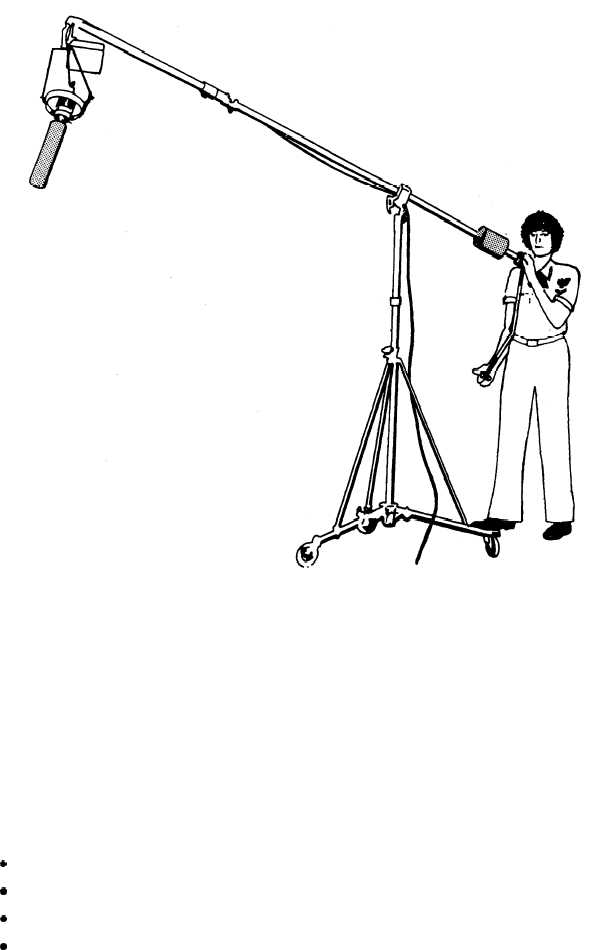Figure 14-20.—Giraffe boom.
pickup and greatly reduced side pickup are desirable.
The bidirectional microphone is ideal for such
applications as “across the table” interviews or dialogue
recording under studio conditions.
The polar patterns of all three microphones are
shown in figure 14-19.
MOBILE MICROPHONES
During your tour as a television broadcaster, you
will use the following four basic types of mobile
microphones:
. Boom
l Hand
l Lavaliere
l Wireless
Boom
The most flexible mobile microphone is one that is
attached to a microphone boom. A boom, in its simplest
form, is a hand-held pole to which a unidirectional
microphone is attached. It permits quick and smooth
movement of the microphone from spot to spot
anywhere on the set. Most booms have a telescoping
feature that allows the operator to extend or retract the
microphone. Some booms have controls at the end so
the operator can rotate the microphone for directional
sound pickup.
Another advantage of the boom is its mobility on
the set. The boom operator can move the entire boom
assembly from location to location and follow sound
sources without an interruption to sound pickup. The
giraffe boom (fig. 14-20) is suited perfectly for this task.
14-21


